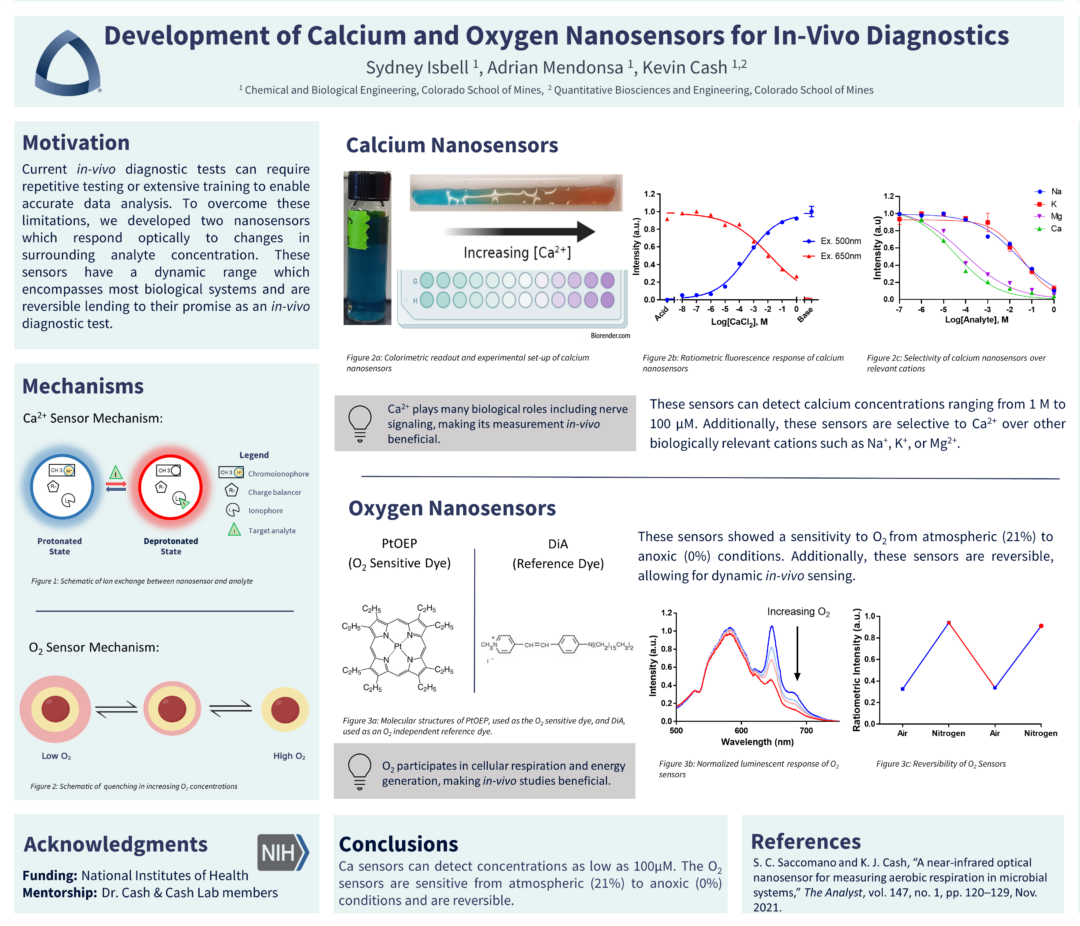Poster Presentation by Sydney Isbell
Junior, Chemical and Biological Engineering
Mentor: Kevin Cash, Chemical and Biological Engineering
Mentor: Adrian Mendonsa, Chemical and Biological Engineering
Abstract:
Diagnostic tests to determine analyte concentration can be repetitive and require extensive training for proper analysis. To address these limitations, we developed two ratiometric nanosensors (calcium (Ca2+) and oxygen (O2)) which could be implemented in-vivo to give insight into biological functions such as nerve signaling and cellular respiration. The Ca2+ nanosensors’ optical properties (fluorescence and absorbance) vary to reflect the surrounding Ca2+ concentration. These sensors are selective to Ca2+ over other biologically relevant cations (Mg2+, Na+, K+) and show a sensitivity to Ca2+ at concentrations as low as 100 µM. The O2 nanosensor is composed of two dyes encapsulated in a hydrophobic PVC matrix. The O2 sensitive dye, platinum octaethylporphyrin (PtOEP), shows a decrease in luminescence with increasing oxygen concentrations. Whereas, the reference dye, DiA, has no O2 sensitivity. These O2 sensors are reversible and have a detection range that spans from anoxic (0% O2) to atmospheric conditions (21% O2). While the Ca2+ and O2 sensors showed functionality in in-vitro studies, testing these sensors in-vivo will determine their effectiveness as a long-term diagnostic aid.
